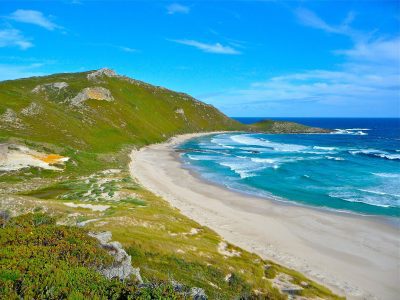Coastal Adaptation In Aotearoa New Zealand
Late last year I received a package from the former Secretary of ACS, Tom Fitzgerald. He is now back in NZ and Co-convenor of the Aotearoa Climate Adaptation Network. In the package was Special Publication No 5 of the NZ Coastal Society entitled “Adapting to coastal change and hazard risk in Aotearoa New Zealand” (November 2022). Tom along with Charles Hendtlass, Ana Serrano and Don Neale served as editors. It is published by the Society (www.coastalsociety.org.nz).
It is a remarkable document and congratulations to all who contributed. It consists of five sections with 17 articles, many of which are multi-authored. The publication provides a range of perspectives from experts with interests in climate change adaptation. The five sections are: 1. Setting the scene; 2. Planning and policy frameworks; 3. Engagement, collaboration and partnership; 4. Advances in coastal science; and 5. Adapting to coastal change in urban and built environments.
Judy Lawrence and Robert Bell in the first paper views “Coasts” as a “special case for adaptation” given the nation faces the sea-level rise challenge; however, other aspects of living in such a hazardous place are integrated into various papers. Recent devastation due to floods on low-lying parts of the North Island highlights how much of what is discussed in these articles is fundamental to managing future risk. Bruce Glavovic in his article on transformational adaptation states that “Coastal adaptation is underway. New adaptation legislation is being promulgated. However, notwithstanding these efforts, the pace and scale of coastal adaptation falls far short of what is necessary to ameliorate projected impacts”. He makes it clear that climate change is “woven into every aspect of life in Aotearoa”. In this paper there is a governance message that resonates with me: “Regional experiences underscore the imperative to establish robust but fit-for-purpose local-regional institutional partnerships”. What he sees could readily apply to Australia.
Lucy Brake in her concluding paper summarises all the various articles and it is beyond the scope of this blog to dive into details. I encourage all interested in coastal adaptation to obtain a copy. I fully appreciate her conclusion that coastal adaptation “does not have a foreseeable end and that effective adaptation processes will require a multitude of changes to regulations, funding arrangements, policies, and infrastructure investments”. She notes that the authors of this publication see that “ the closest we can get to success is having communities that are prepared for, and empowered to respond to, an increasingly unpredictable future”.
The NZ Government is on course to do something along this pathway. New legislation is emerging with the Natural and Built Environment Bill and there is also an anticipated Climate Adaptation Bill. The Environmental Defence Society (EDS) in NZ working alongside the NZCS, is very active in advocating for this legislation. The CEO of EDS, Gary Taylor, in a press statement of 17 February, states that development should not take place in flood-prone areas, and that councils better plan for managed retreat in order to create a country that is resilient to the effects of climate change.
Australia should look carefully at what NZ is doing at this time with its new national legislation. We have enough experience from extreme climate events and knowledge of climate change science to develop a consistent national approach to climate adaptation. Let us get on with it!
Bruce Thom
Words by Prof Bruce Thom. Please respect the author’s thoughts and reference appropriately: (c) ACS, 2023. For correspondence about this blog post please email admin@australiancoastalsociety.org.au
#234



 US Coastal Barrier Resources Act: Model for Strategic Federal Intervention?
US Coastal Barrier Resources Act: Model for Strategic Federal Intervention?